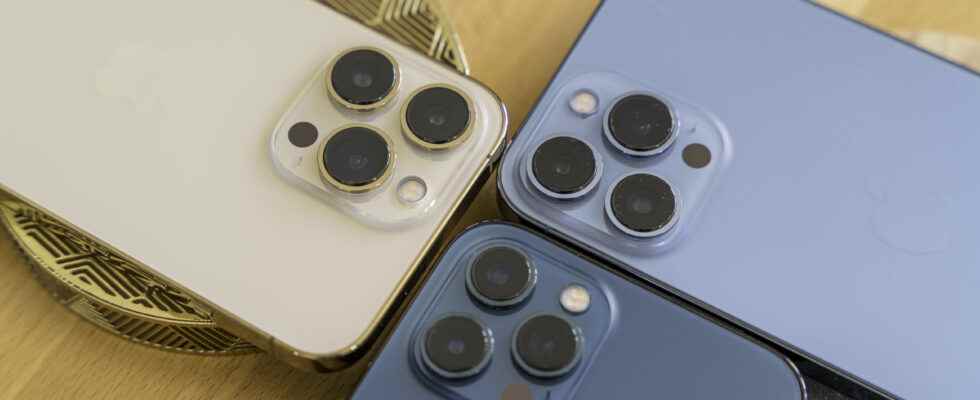The iPhone 14 have not yet been released, but the first information about the 2023 vintage is already beginning to emerge. This week, we learn a little more about the processors chosen by Apple for its iPhone 15.
If the information has of course not been confirmed, rumors have been pointing for months to the adoption of latest generation chips (A16 Bionic this year) only on the iPhone 14 Pro. It seems that Apple will stick to this same strategy with the iPhone 15 Pro, expected in 2023. According to information relayed by WCCFTech, only the iPhone 15 Pro and 15 Pro Max would thus be equipped next year with the new A17 Bionic processors, at the forefront of what the firm will then be able to offer. The “classic” iPhone 15 and 15 Max would be content with A16 Bionic chips, thus following the same distribution as that anticipated this year.
A17 Bionic or the transition to 3 nm
This solution allows Apple to kill two birds with one stone: limit the impact of the shortage of components (TSMC, the founder of Apple Silicon SoCs, having trouble keeping up…), while staggering its offer a little more. Advanced users will therefore be increasingly encouraged to opt for the Pro models, which feature the very latest innovations, including in terms of power, while the “non-Pro” iPhones will be aimed even more markedly at the general public.
In any case, future A17 Bionic chips will logically be engraved using TSMC’s new 3 nm process, which should begin to be exploited at the end of 2022. As with each change in engraving fineness, we should benefit from better efficiency energy and a more or less significant leap forward in terms of performance. As a reminder, the A16 Bionic chips expected on the iPhone 14 Pro should once again be satisfied with TSMC’s 5 nm engraving, already used by the A15 chips of the iPhone 13/13 Pro.
Towards a (little) marketing sleight of hand?
It remains to be seen what configuration the A17 chips will adopt. It seems likely that Apple will continue to offer a design articulated around six CPU cores (two high-performance cores and four high-efficiency cores), but nothing yet allows us to know what the specifications of the GPU part of the SoC will be. We should know more as more leaks come in the coming months.
Note, however, that Apple could very well choose to slightly change the name of its future chips, taking inspiration from what it is currently doing on Mac with its M1/M1 Pro chips. If only the iPhone Pro are equipped with brand new chips, one can imagine that the current A16 chips will be renamed A17 (even if Apple chooses to improve them slightly) to integrate with the “classic” iPhone 15s. The real A17 chips engraved in 3 nm could then be called A17 Pro to be installed on board the iPhone 15 Pro.
Source : WCCFTech

1